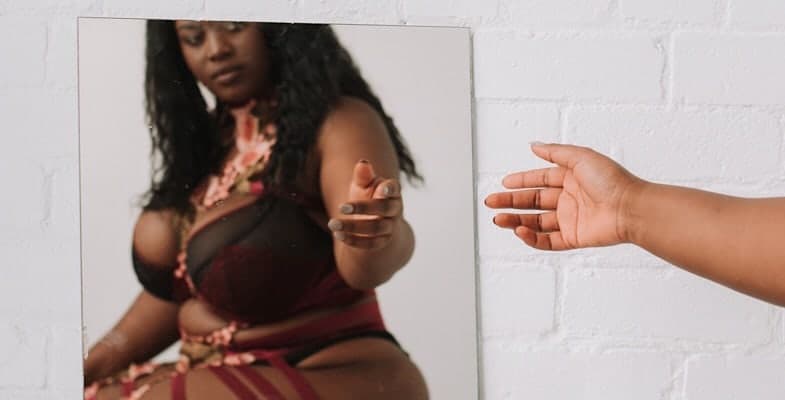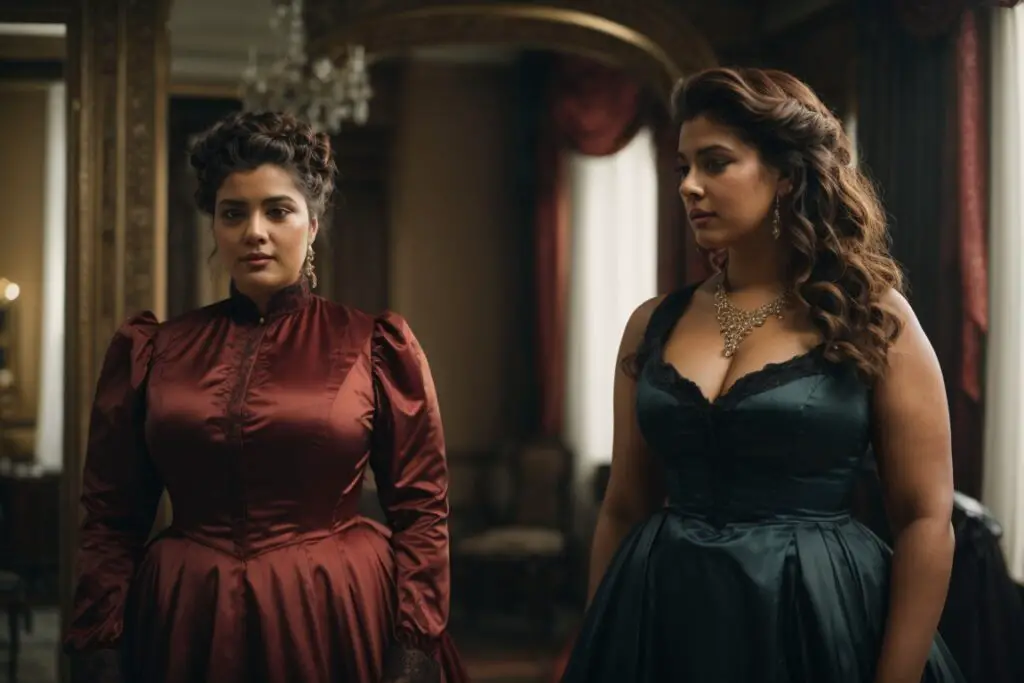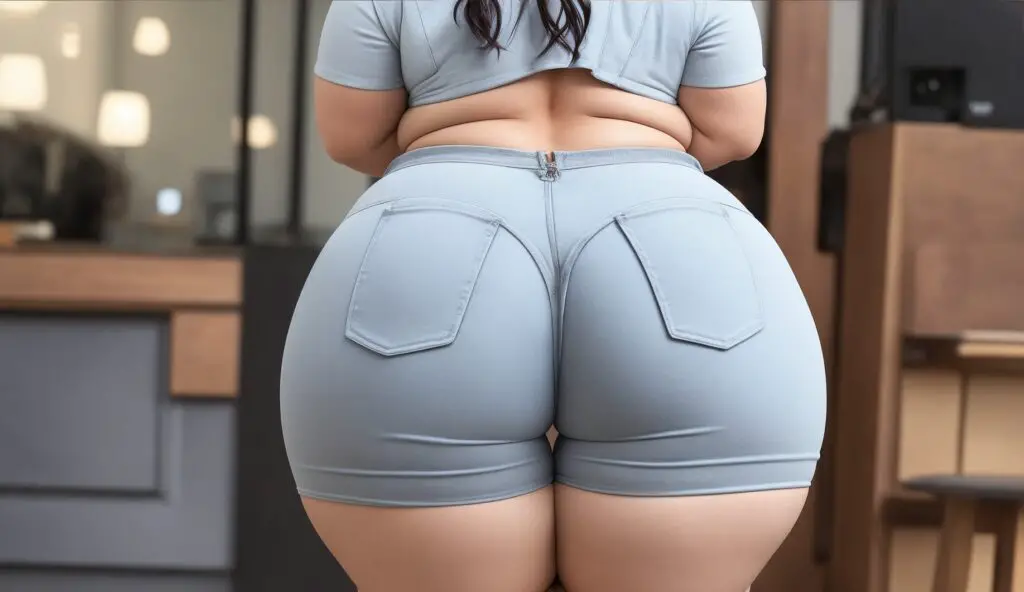Whereas there are several narratives of what the term curvy means and numerous variations of how the term is used, here is a detailed guide to know what exactly curvy is and is not.
Contrary to what many assume, curvy doesn’t just mean you have curves on your body, otherwise, all women would qualify as curvy. However, the label is used to refer to women with a certain type of curvy silhouette.
Curvy is an approving label used to refer to women with extremely contrasting breast-to waist-to hip proportions. The waistline is significantly smaller and the bust and hips prominently bigger.
Being a reference to a particular body type, curvy has been used to designate a class of jeans, intimates, and clothing generally. However, there hardly seems to be any real consensus on what the term describes especially in fashion clothing.
As like every other fashion phenomena such as sizing, color pallet and hues, designs and the like, each fashion house looks to stand out and in some way reinvent the wheel when it comes to these things. It is rare to find different fashion labels and brands sharing the same sizing scale or color designations. What is labeled as a size 6 in some stores in other stores is labeled a size 8 or even 10. Likewise, the use of the label curvy varies from setting to setting. Here are a few examples.
In some fashion settings, curvy is used to refer to bigger women in contrast to smaller or regular-sized women. As opposed to using insensitive terms such as fat, plump, and the like, some brands would prefer to use curvy instead as a more respectful and polite term. In other settings, curvy is used to refer to women with larger hip proportions – the breast size is hardly a consideration here. This is popular especially in brands that specialize in designing female pants and bottoms. Their curvy collections often has more room around the hips compared to a regular-sized pair of jeans or pants.
Curvy is also used as an empowering term by females who may generally be deemed to be super-sizes or even obese. Again, like its use by women in the plus size fraternity, curvy is preferred because of its respectful connotations. It is hardly abrasive and helps women also appreciate their body sizes without being excessively critical or overly obsessing with every imperfection.
What’s in a Name?
“That which we call a rose by any other name would smell as sweet”
This famous quote by Shakespeare still rings with much truth even centuries past. Why are people so caught up and intrigued by naming things – classifying what it is, what it is not or what it should be, and what it should not? Constantly, there is a compelling inherent drive in men for answers, true answers. For more clarity on things, topics, and concepts.
By naming a thing, an idea, a phenomenon, and the like, the thing or idea becomes more relatable, more understandable, and less abstract. Generally, names help you appreciate the character, purpose, poise, loftiness, or otherwise of a thought or concept. The same holds true to why the fashion community and society at large are always labeling body types – body shapes and sizes. Perhaps it is our humane way of understanding things better.
By distinguishing the various features of several silhouettes and naming each according to its distinguishing features, the fashion world has been able to appreciate the similarities and also stark differences in women’s body types. Interestingly, even amongst these broad classifications of body types, there are further classifications that seek to zero down on specific characteristics and traits of that particular class. Before we delve into the further sub-categories of what ‘curvy’ refers to, let’s first look at what curvy is not.
Debunking Popular Myths of What Curvy Means
1. Curvy does not Mean Plus Size
The term curvy is popular in plus size circles but it is not the exclusive reserve of plus size women. Granted, plus size women have bigger proportions especially on their lower halves but that does not mean they are the only section of women who can have prominent curves. Even thinner girls can be curvy!
Curvy has a lot to do with proportions and ratio and very little to do with general body size. It is not given that if you are larger than you automatically will be curvier than a small-bodied woman. A woman whose breast-waist-hip ratio is 34-25-36 will definitely be deemed curvier than a plus size woman who measures 42-36-42, although the latter is bigger.
2. Curvy Women are more Fertile than the Average Woman
Many people believe that the curvier a woman is the more fertile she is. A lot has to do with the culture and basic traditions of a people, however, it is surprising how strongly and widely this belief is held. A lot of research has been undertaken on this account. Scientists have grappled with the question of fertility vis a vis body types to see whether there is any real correlation between these two.
Research proves that these assertions are unfounded superstitions rather than facts. Research has shown that fertility is related to Body Mass Index (BMI), and age more than body shape. Whether you are stick thin or extremely curvy there is little to no relation to whether or not you are more fertile than another female with another body type. Body type may be a consideration only to the extent that it affects your weight, which ultimately affects your BMI, and even then it is not a significant factor.
What can be said to be an ‘advantage’ that curvier women have over other silhouettes, is that they have greater ease during delivery, because of their enlarged hip proportions. We typically refer to their prominent hips as ‘child bearing hips’ and that is not without reason. Science has proven this aspect to be true. However, with the modern advents in technology and birth care, difficulty during delivery can be mitigated by proper diet and nutrition, advanced pregnancy monitoring, treatment, and delivery procedures.
3. Curvy Women are Often Younger
Again, as with the other myths on this list, nothing can be further from the truth. Age has nothing to do with body shape. You can be younger and have a relatively thin silhouette, or mature, age 40 and above, and extremely curvy.
Those who assert this notion tend to appreciate only one side of the debate. It is undisputed that during puberty a girl’s body undergoes several changes, a considerable number of ladies develop substantially larger hips and breasts when they are in their teen years. However, several other factors affect one’s physical appearance whether during puberty or their later stages in life. These are:
- Genetics – genes dictate where your body will tend to carry weight, either your hips or belly or cheeks or arms.
- Lifestyle choices – if you consistently make healthy choices on your diet, sleep quality, and workout regimen, you are bound to have an amazing and healthy body, regardless of age. The converse is true if you are inactive and lack initiative in taking care of your body and mind. Celebrities such as Halle Berry, Jennifer Lopez, and Kim Kardashian are living testaments that being curvy is not dependent on age.
4. Men are only Attracted to Curvy Women
Whereas it is true that a majority of men like curvier women, not all men do. What one likes or dislikes is a purely subjective topic and dependent on an array of factors such as background, culture, perspective, surroundings, prevailing societal influences, and the list goes on and on.
Several women are hell-bent on the idea that they are less attractive than curvier women and thus will not be able to secure a life partner unless they ‘do something about their figures’. Some have undergone surgery to achieve this ideal look all in the name of beauty and attractiveness, whereas others have become more and more distressed, depressed, and self-sabotaging about how they look.
Some study on this assertion was undertaken and the findings were relatively similar to the above. A majority of men would prefer a lady whose body proportions are less than 0.7 on average but also would not mind proportions up to 1.18 on average. Additionally, most men interviewed in the study expressed that they also found other body types beautiful and attractive. ‘It’s all about her energy, her smile, her confidence, more than it is about her looks,’ said one interviewee.
Different types of Curvy Silhouettes
Within the broad label of being curvy, there are further classifications on the different types of silhouettes that are termed to be curvy. These are:
1. Hourglass Body Shape
This is perhaps the most coveted body shape among women but also the rarest silhouette in the curvy category. Women with hourglass shapes have nearly the same measurements of their busts and hips while flaunting a tiny – wasp-thin waist at their midsection.
2. The Pear Shape
This shape is the most common silhouette in this category. Women who have pear-shaped bodies have smaller busts and even smaller waists and significantly large hips. Their smallest/ narrowest feature is their waistline which is well defined.
3. Mango Shape
This silhouette is also common in the curvy category and refers to women who in addition to their large voluptuous hips have significantly large thighs and legs. Their thighs are substantially thicker and protruding than the average curvy silhouette. Their smallest part is their waistlines followed closely by their busts – which may or may not be small.
Is Referring to A Woman As Curvy Objectifying Her?
Some people contend that the term curvy bears sexual and provocative undertones. However approving or flattering it may sound, some think of it as over-emphasizing a woman’s body parts rather than the person. Arguably, when you hear someone referred to as curvy, the first thing that comes to mind is the size of her behind or bust – her body measurements and proportions. Rarely do you first think of an individual along the lines of their charisma, kindness, character, personality, and the like.
Due to this, feminists especially, argue that such demeaning and dehumanizing terms be done away with. On the flip side, women who are termed as ‘curvy’ are flattered by the label. A majority are not offended nor do they feel objectified whatsoever.
It is usually interesting to note how the label is used by women to refer to their unique physical attributes and proudly so, simply because of the positive rather than negative connotations generally associated with it. This is quite different with terms such as super-sized and more recently ‘plus size’ which still are terms that refer to women’s bodies but are viewed in a negative light.
As a side note, with so many women envious of being curvy and especially obsessed with attaining the glorified hourglass figure, few stop to think if there are any cons of having an extremely voluptuous lower half proportion. Some cons that curvy ladies tend to complain about their body shapes include:
- They easily bump into and knock over things.
- It is difficult to shop for clothes – most clothes that fit around the waist are too small for their hips or busts and vice versa, clothes that fit perfectly around their hips or busts are too large around their waist.
- It is difficult to lose weight – these women can easily gain weight around their hips and butts but it is an uphill task to lose the same. This is primarily so because their bodies naturally store fat around these areas and thus depleting large fat reserves may take some time.
- Some find their lower halves too heavy or their busts too large causing a lot of stress on the body to handle the weight. It sometimes is tiring to do simple things such as a fast walk because of the additional weight.
So before you embark on your pursuit of a curvy frame do consider the above.
Conclusion
Curvy may mean several things, but what is true of the term is that it refers to women. And as beauty comes in all shapes and sizes, it is worthwhile to appreciate and celebrate the various silhouettes that women have. Hopefully, you’ve learned a thing or two about what curvy is and what is not. Till our next post, bye!



